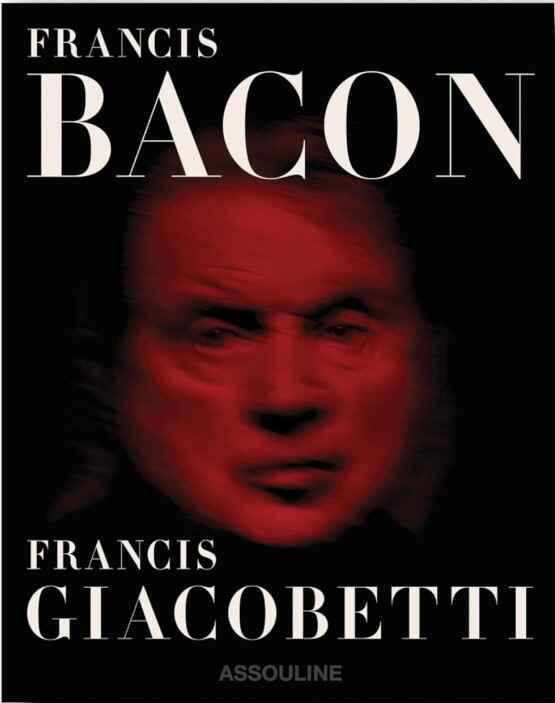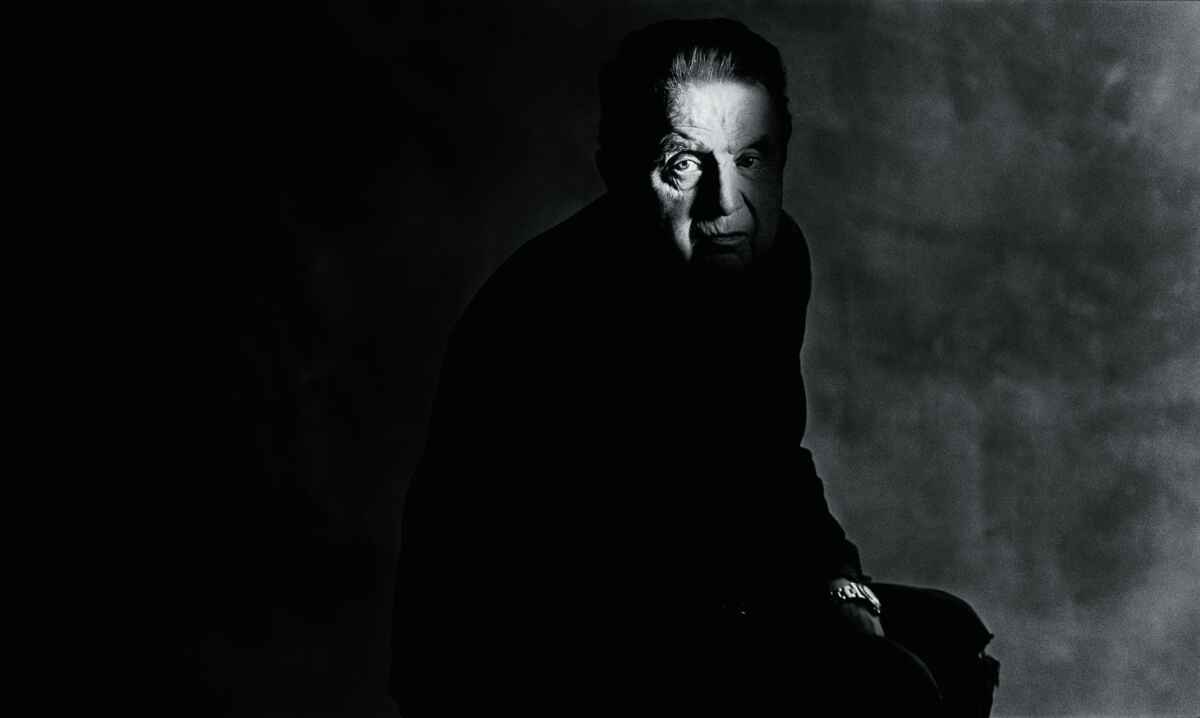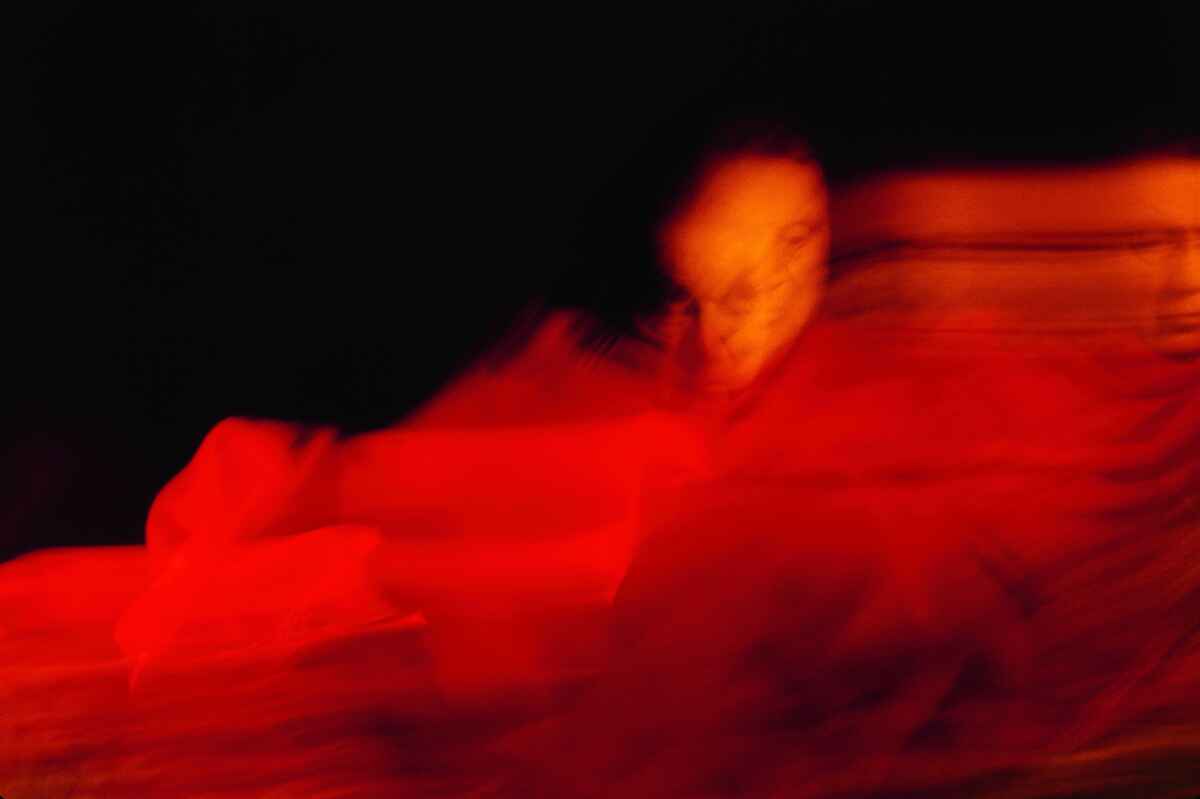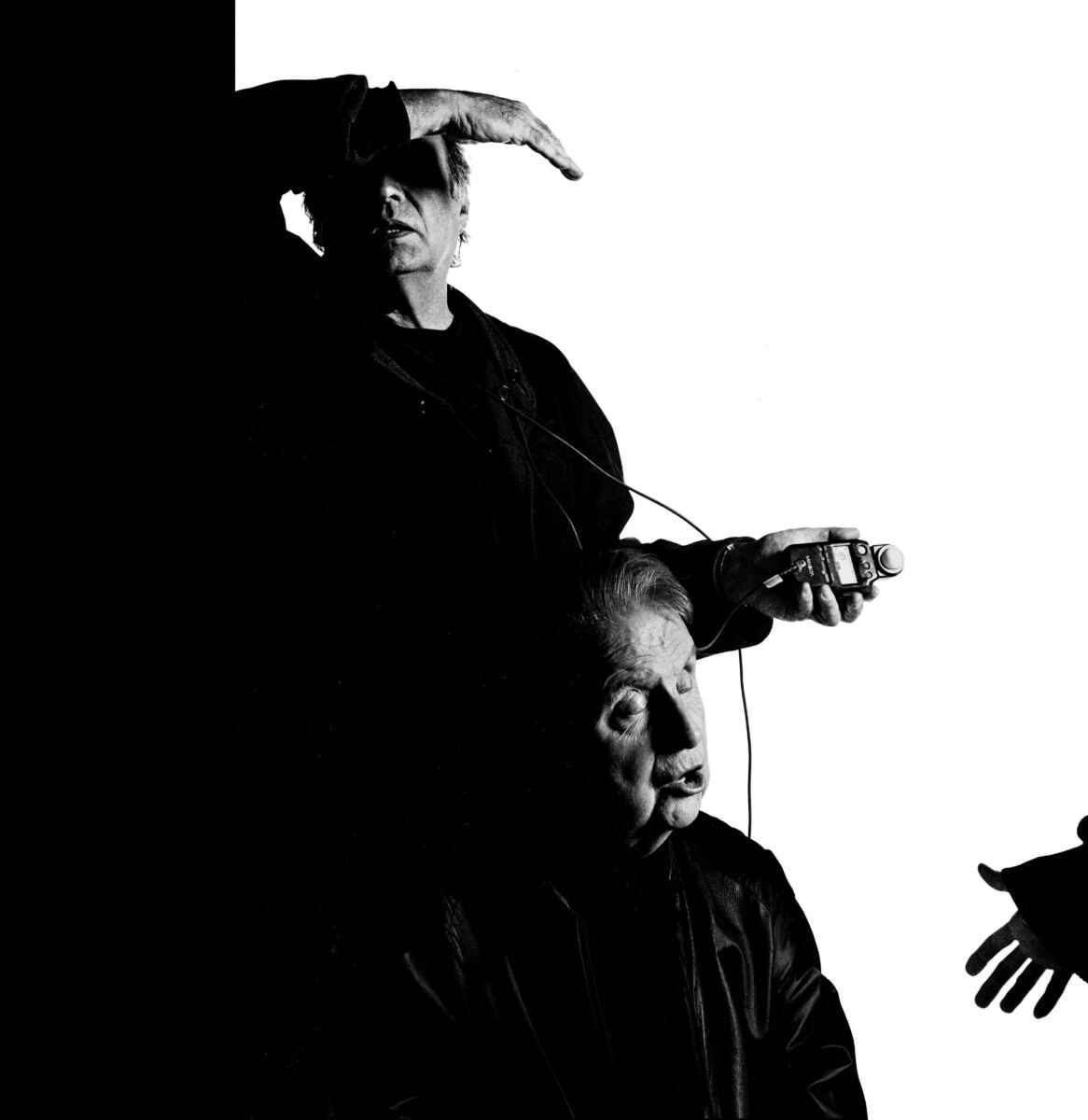
Born in Marseille in 1939, Francis Giacobetti is a French photographer and filmmaker (e.g. Emmanuelle l’antivierge, 1975). He rose to prominence notably thanks to fashion photographs for Elsa Schiaparelli, Pierre Balmain, Madame Grès and other fashion houses as well as for his work for glossy magazines such as Marie Claire, Paris Match and Playboy.
Thanks to the help of the editor Michel Archimbaud, from late 1991 to early 1992, just months before he passed away, the sulfurous Irish-British painter Francis Bacon (1909-1992) granted Francis Giacobetti a series of interviews and sittings. The French photographer portrayed the artist and his surroundings and created a series of some 200 original images inspired by Francis Bacon’s unsettling works (check some of the photos below). Presenting these never-before-published photographs, this volume relates an unprecedented and unflinching portrait of this important but disconcerting artist.
Francis Bacon by Francis Giacobetti, Assouline, 2024, 264 pages with 200 illustrations, 38 x 33 x 8 cm. Accept cookies — we receive a commission; price unchanged — and order the English book from Amazon.com.
Already in 1994, the Marlborough Gallery London showed the exhibition Francis Bacon by Francis Giacobetti and, in 2005, the British auction house Christie’s even issued a catalogue called Francis Bacon by Francis Giacobetti, but the project was cancelled because of protest by Francis Bacon’s right holders.
In the 2024 Francis Bacon by Francis Giacobetti book, a relevant article by Jean Michel Roques for Vanity Fair from November 2014 is republished. It states that, when Francis Bacon died, one John Edwards, a completely illiterate former bar manager found himself the painter’s only heir.
Francis Bacon’s estate was valued at £11 million. The art world suspected foul play. There were suspicions about the Marlborough Gallery, which had sold the majority of Bacon’s canvases at a very low price. Already in 1975, the same gallery had been accused of embezzling the works of Marc Rothko and was ordered to return 658 works to the American painter’s heirs and pay $9.2 million in damages.
In 1999, John Edwards sued the Marlborough Gallery before a British court. As Francis Bacon’s heir, he requested that all of the artist’s paintings be returned to him, along with $10 million in damages. To defend himself, Gilbert Lloyd, the son of the gallery’s founder, in a panic, asked Francis Giacobetti to testify on his behalf, saying, “Our commissions were high, but Bacon was paid in advance and in cash.”
Francis Giacobetti sent a video to the judges, which he had made on the day of his meeting with Francis Bacon who said: “I know that the price of my work is manipulated by sellers, but I don’t paint for money. They think it’s me who profits, but that’s not true, it’s the gallery. They buy my paintings for a price that has nothing to do with what they say in the papers. They’ve bought my paintings, so they are free to raise the prices as they see fit.”
In a conversation between Michel Archimbaud and Francis Bacon, the Irish-British artist declares, with his usual sense of provocation: “I get along very well with the gallery’s owners, the Lloyds, as well as one can with German jews…”
In the judge’s opinion, Francis Bacon had acted knowingly and had not been cheated. The furious John Edward had to withdraw his complaint. Subsequently, Gilbert Lloyd called Francis Giacobetti from New York to tell him: “Francis, you saved the Marlborough. I’m hopping on a plane and tonight we’ll dine at L’Ami Louis.”
In his 2014 Vanity Fair article, Jean Michel Roques writes that, in November 2005, came a dramatic turn of events. The attorneys for Philippe Mordue, the former partner and heir of Edwards, who had died of AIDS two years earlier, as well as members of a trust that managed Francis Bacon’s rights and estate, challenged Francis Giacobetti before a London court. As revenge, they intended to forbid him from reproducing any of the painter’s paintings in his book, even though, as Francis Giacobetti noted, “I had an authorization that had been signed by Bacon himself”.
The authorization stated: “I, the undersigned, Francis Bacon, assign to Francis Giacobetti the right to reproduce any amount of my paintings for his book, with no payment of fees or copyrights, without territorial or temporal limitation.”
Nevertheless, the publication of the photographs was forbidden. Therefore, the 2024 Francis Bacon by Francis Giacobetti, published by Assouline, 264 pages with 200 illustrations, 38 x 33 x 8 cm, is the first time the 1991/1992 photographs by the French photographer are published. Accept cookies (we receive a commission) and order the English book from Amazon.com.

Francis Bacon photographed by Francis. Giacobetti. Photograph copyright © Francis Giacobetti.
In a conversation published in the 2024 book Francis Bacon by Francis Giacobetti, the French photographer says: “Francis, Sir John Rothenstein, of the Tate Gallery, said this about your painting: “There is a way to look at a Bacon painting, to see it as a mirror reflecting our own suffering, our fear of solitude, of failure, of humiliation, of growing old and of the innumerable catastrophes that threaten us.” I think he came very close to your truth.”
Francis Bacon responded: “Yes, no argument there, John has always understood many things, he is very intelligent.”
Later in the interview, Francis Giacobetti says: “When I listen to you speak, I feel that you are incapable of making concessions. Not to fashion or people or constraints.”
Francis Bacon answered: “But that’s the privilege of being an artist who sells his paintings for a lot of money. We are free to sleep late in the morning, to refuse to wash or paint. I have never made any concessions. Not to fashion, not to constraints, not to anything. I was fortunate not to have to, because it’s in my nature to avoid social situations and obligations, to prefer simple folks over the more refined ones. I was lucky to never have to compromise myself in one way or another. Maybe because I didn’t attend school like everyone else, I made my own rules, rules that pleased me and, more importantly, were better adapted to my personality. I think I have a difficult personality, I’m not easy. I tell the truth even if it hurts. My excuse is that I love wine, and when I’m drunk I say a lot of foolish things. And since I do have excuses, I make the most of them. I never censor myself.”

Francis Bacon photographed by Francis. Giacobetti. Photograph copyright © Francis Giacobetti.
To visit in Dublin: Francis Bacon’s atelier at 7 Reece Mews
In October 1962, after a decade of painting in temporary spaces, Francis Bacon moved into 7 Reece Mews in South Kensinton, London. It remained his atelier until his death in April 1992. Hugh Lane Gallery Director Barbara Dawson secured the donation of Francis Bacon’s studio from the artist’s heir John Edwards and Brian Clarke executor of the Estate of Francis Bacon. In 1998, the entire content of Francis Bacon’s atelier was moved to Dublin where it is permanently on display in the Hugh Lane Gallery, where I could admire it some 20 years ago.
In 2001, the book 7 Reece Mews: Francis Bacon’s Studio was published. Foreword by John Edwards, photographs by Perry Ogden. Thames & Hudson, 2001. Accept cookies (we receive a commission; price unchanged) from Amazon.com, Amazon.co.uk, Amazon.de, Amazon.fr.

Francis Bacon photographed by Francis. Giacobetti. Photograph copyright © Francis Giacobetti.
A few more quotes from the painter Francis Bacon united in book Francis Bacon by Francis Giacobetti
Francis Bacon: “Any artist worthy of the title spends his whole life dreaming of making the ultimate painting, the one that will forever define the discipline. For us,vanity never wanes.”
Francis Bacon: “Great art doesn’t require any explanation, because we experience it as a shock. It hits our nervous system directly, without any need for culture or intelligence. Explanations have no place in my conception of painting. In other words, if you can say it,why bother painting it?”
Francis Bacon: “To be completely truthful, what I love the most in the world is not the actual paintings themselves, but the act of painting. I have been lucky enough to make a living from myobsession. It’s the only success I can claim. I have no advice to give, nothing to preach.”
Francis Bacon: “Only painting matters. At that moment, I have no age, the only thing that remains is thedesire brought on by the technical challenges. I am hypnotized by every painting I work on and can only separate myself from it when I’ve finished. Then I ask the gallery to take it away as quickly as possible.”
Francis Baclon: “I paint for myself, only for myself. I never imagined that I could make a living from my paintings. At the beginning, I was very surprised that people were willing to pay for them. And some people even think that the more expensive they are, the better. I find that very masochistic.”
It is interesting to read the term “masochistic” coming from Francis Bacon, who himself was a masochist who loved being beaten up. Incidentally, in 1886, the term sadomasochism was coined in Lviv, today Ukraine, back then called Lemberg as part of the Austro-Hungarian Empire. The Austrian psychiatrist Richard Freiherr von Krafft-Ebing named sadomasochism after Leopold von Sacher-Masoch (1836-1895), a professor, writer and journalist (accept cookies and purchase books by and about Sacher-Masoch from Amazon.com), and this during Sacher-Masoch’s lifetime! The author of the novella Venus in Furs (Venus im Pelz (accept cookies and purchase the book from Amazon.com) not only wrote about sexual fantasies and fetishes, he lived them in real life, for instance making himself by contract the slave of his mistress Baroness Fanny Pistor for the period of six months.

Francis Bacon photographed by Francis. Giacobetti. Photograph copyright © Francis Giacobetti.
Incidentally, in 1993, I had to chance to visit the first Francis Bacon retrospective after the artist’s death. In Lugano (Switzerland), the show left a lasting impression on me. I am not just talking about the brutal, raw depictions of the human condition depicted by the gay, masochistic painter. What impressed me even more was the contrast between the brutal subject of his works and the aesthetic, colorful backgrounds of his canvases. He was a great colorist. Not many people seem to have noticed.
In 2018, Fondation Beyeler in Switzerland rightly paired two of the most important 20th century artists: Francis Bacon and Alberto Giacometti. Read my German article about the Beyeler exhibition.

Francis Bacon by Francis Giacobetti, Aoussline, 2024, 264 pages with 200 illustrations, 38 x 33 x 8 cm. Order the English book from Amazon.com.
For a better reading, quotations and partial quotations in this Francis Bacon by Francis Giacobetti review have not been put between quotation marks.
Book review added on October 10, 2024 at 22:50 German time.